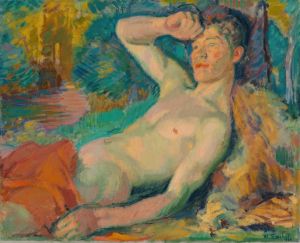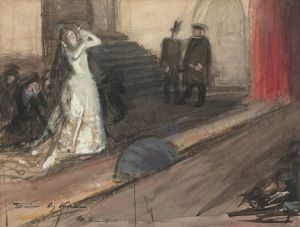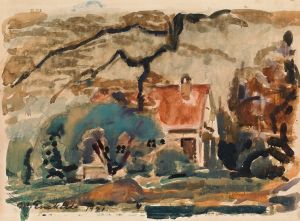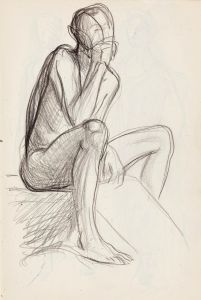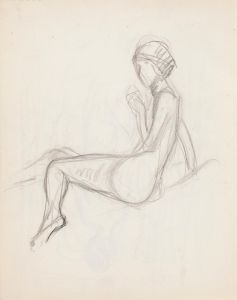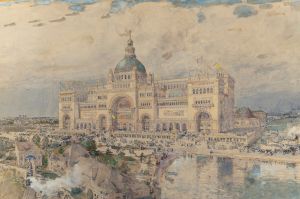
Maisema, puita
A hand-painted replica of Magnus Enckell’s masterpiece Maisema, puita, meticulously crafted by professional artists to capture the true essence of the original. Each piece is created with museum-quality canvas and rare mineral pigments, carefully painted by experienced artists with delicate brushstrokes and rich, layered colors to perfectly recreate the texture of the original artwork. Unlike machine-printed reproductions, this hand-painted version brings the painting to life, infused with the artist’s emotions and skill in every stroke. Whether for personal collection or home decoration, it instantly elevates the artistic atmosphere of any space.
Magnus Enckell (1870–1925) was a prominent Finnish symbolist painter, known for his significant contributions to Finnish art in the late 19th and early 20th centuries. His work is characterized by a transition from a more somber, symbolist style to a brighter, more colorful approach in his later years. One of his notable works is "Maisema, puita," which translates to "Landscape, Trees" in English.
"Maisema, puita" exemplifies Enckell's mature style, where he embraced a more vibrant palette and a focus on natural themes. This painting reflects his interest in capturing the serene beauty of the Finnish landscape, a common subject in his later works. Enckell's ability to convey the tranquility and subtlety of nature is evident in this piece, where he uses color and form to create a harmonious composition.
Enckell was part of the Finnish symbolist movement, which was influenced by broader European trends in symbolism. This movement often emphasized themes of mysticism, dreams, and the exploration of the human psyche. While Enckell's earlier works were more aligned with these darker, introspective themes, his later paintings, including "Maisema, puita," show a shift towards a more optimistic and light-filled representation of the world around him.
The painting "Maisema, puita" is notable for its use of light and color. Enckell employs a technique that captures the changing effects of light on the landscape, a method reminiscent of Impressionist influences. The trees in the painting are depicted with a delicate touch, their forms blending softly into the surrounding landscape. This approach highlights Enckell's skill in rendering the subtleties of nature, creating a sense of depth and atmosphere.
Enckell's work, including "Maisema, puita," played a significant role in the development of modern art in Finland. He was a member of the Septem group, a collective of Finnish artists who sought to introduce new ideas and techniques to Finnish art. This group was instrumental in moving Finnish art away from the more traditional academic styles that had dominated the 19th century.
Throughout his career, Enckell was also involved in various public art projects, including frescoes and other large-scale works. His contributions to Finnish art were recognized during his lifetime, and he held several important positions within the Finnish art community, including serving as the chairman of the Finnish Artists' Association.
"Maisema, puita" remains an important work within Enckell's oeuvre, illustrating his transition from symbolist themes to a more naturalistic and light-infused style. It reflects his deep appreciation for the Finnish landscape and his ability to convey its beauty through his art. Enckell's legacy continues to influence Finnish art, and his works are celebrated for their contribution to the cultural and artistic heritage of Finland.





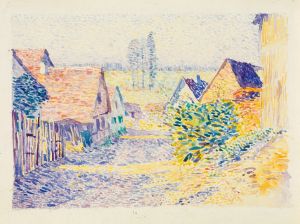

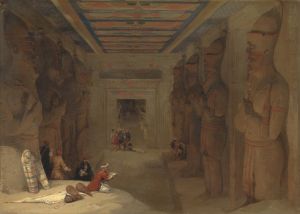
![Excavated temples of Aboosimble [Abû Sunbul], Nubia.](/imgs/217481/s/david-roberts-excavated-temples-of-aboosimble-abu-sunbul-nubia-2ca5e7e8.jpg)
